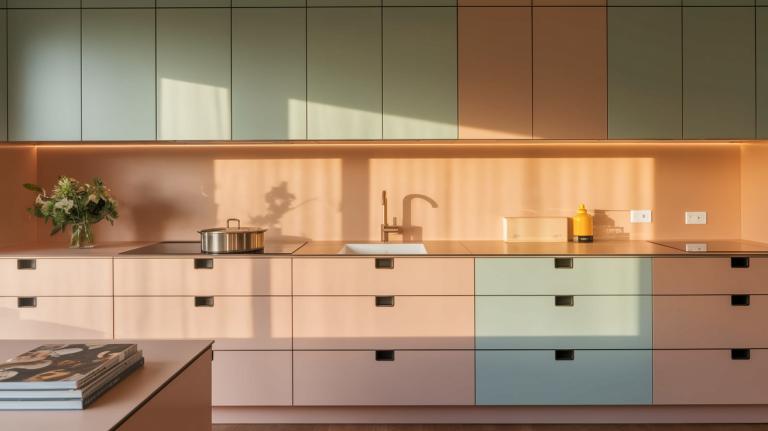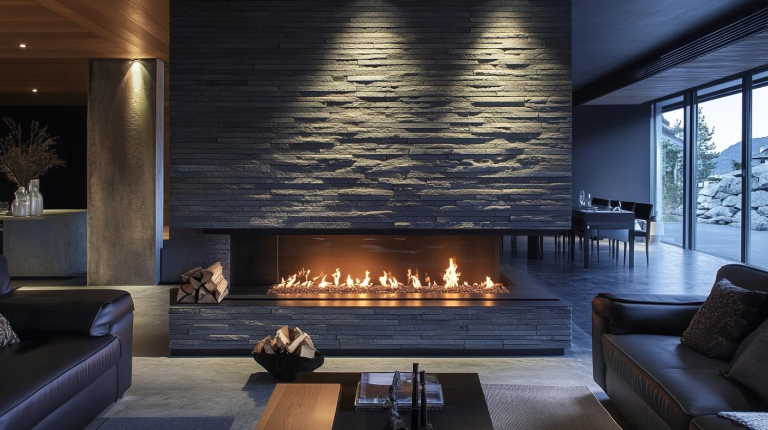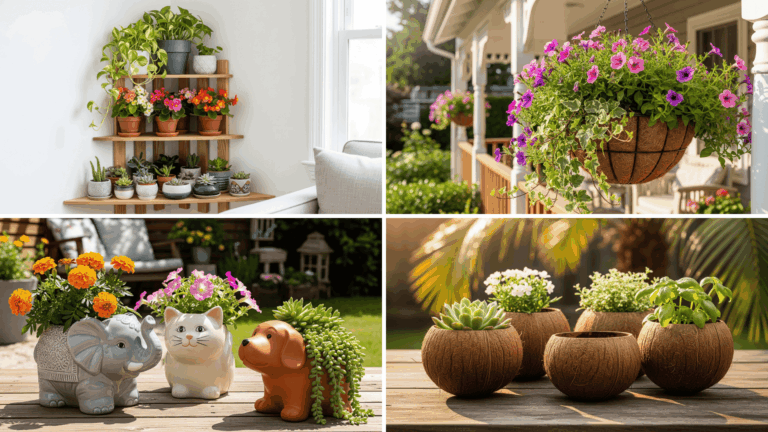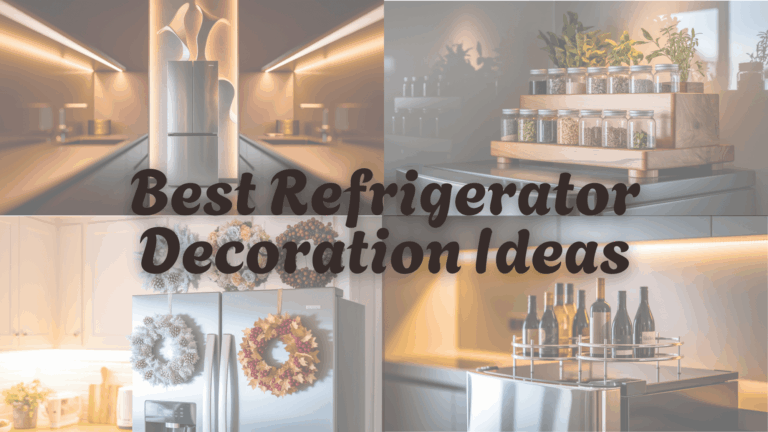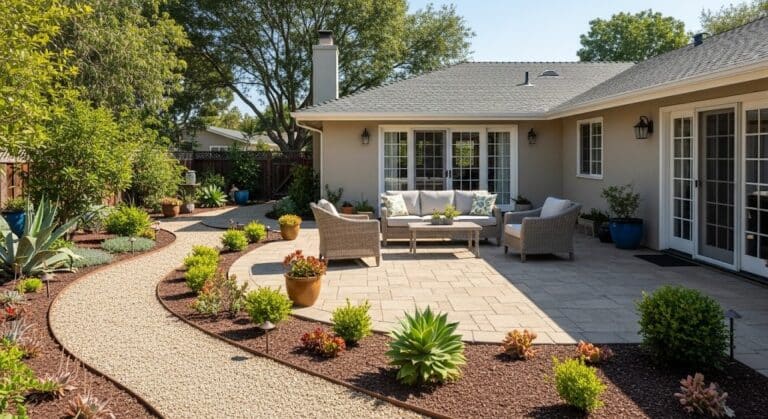25 Classic Mid-Century Modern Colors to Design Your Home
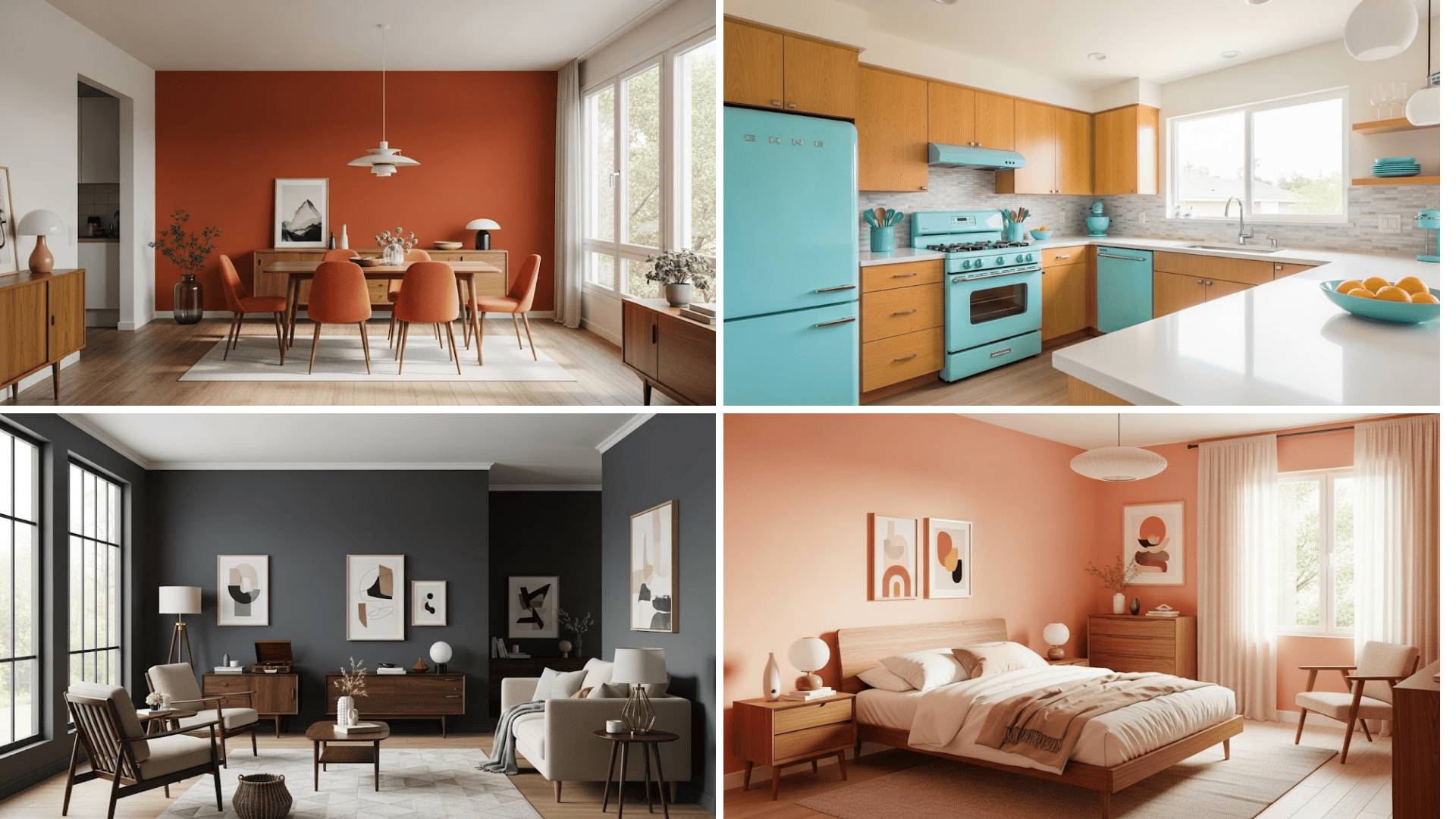
Love homes that feel calm, stylish, and full of personality? The mid-century modern color palette brings that feeling to life through simple, rich shades.
It mixes soft pastels, deep tones, and earthy colors to build spaces that feel fresh, balanced, and easy to enjoy every day.
Using the right shades can help turn any room into a cozy and timeless spot without adding too much clutter or noise.
We will be telling you about shade types, where to use them, and smart ways to match them for a true mid-century modern look.
Key Characteristics of Mid-Century Modern Design
Mid-century modern design is defined by several distinctive features that set it apart from other styles. These key characteristics include:
- Clean Shapes: Furniture and buildings use straight lines and smooth curves. There’s little decoration, keeping the look simple and neat.
- Natural Materials: Wood like teak, walnut, and oak is common. These are often mixed with metal, glass, or plastic to add contrast and texture.
- Open Layouts: Spaces feel open and airy. Rooms are made for comfort, easy movement, and everyday use without too much clutter.
- Retro Shades: The design uses bold, warm shades that make the space feel fun, cozy, and full of character.
- Indoor-Outdoor Feel: Large windows and glass doors let in natural light and give a clear view of the outdoors. This helps rooms feel bright, fresh, and connected to nature.
Mid-Century Modern Color Palette
Mid-century modern shades are chosen with care to create balance, contrast, and mood.
Each type of shade plays a role in making rooms feel warm, bright, calm, or bold. This style works well today because it blends past and present in a simple, thoughtful way.
Below, we explore how these shades are grouped and used to shape mid-century modern spaces.
Warm Tones
These colors bring a sense of warmth and energy, adding vibrancy and comfort to mid-century modern interiors.
Warm tones are perfect for creating a cozy, inviting environment and can act as a bold accent or focal point in a room.
1. Mustard Yellow
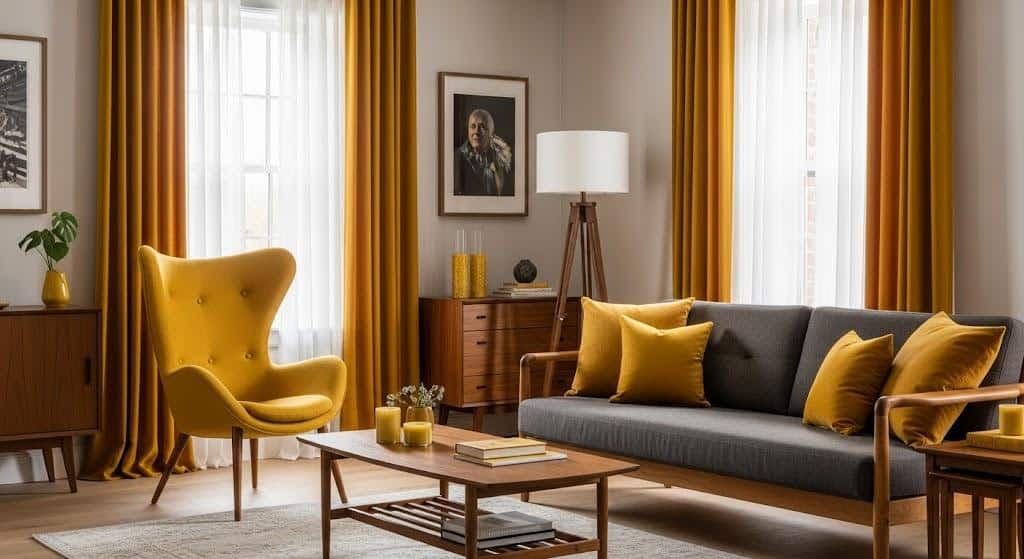
Mustard yellow is an earthy, retro hue that brings spaces warmth and personality. It works well in accents such as throw pillows, rugs, or as a statement wall color.
This bold shade pairs beautifully with neutral tones like gray and white, making it versatile for creating inviting mid-century modern spaces.
2. Burnt Orange
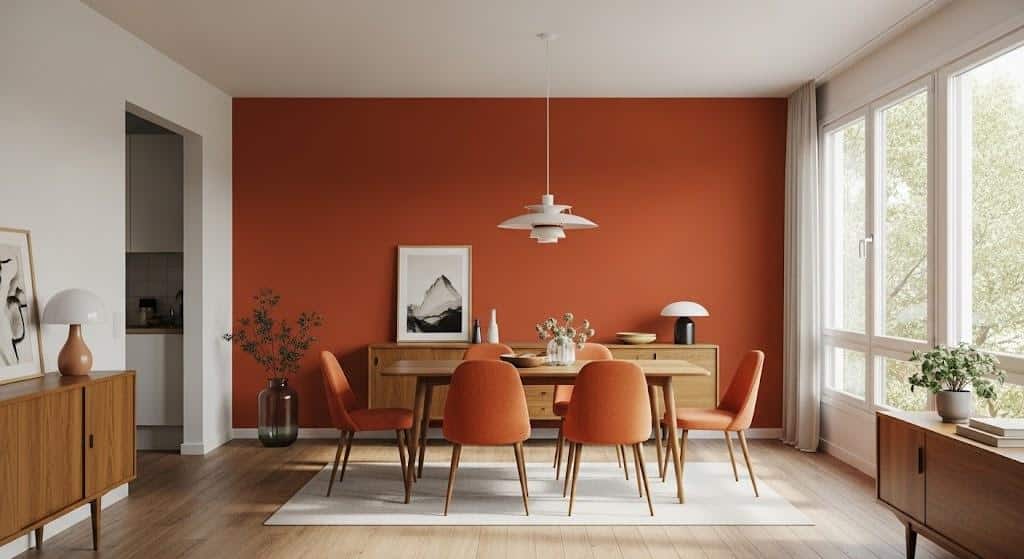
Burnt orange is a rich, deep hue that gives off a warm, nostalgic vibe. It’s perfect for furniture, accent walls, or decorative pieces.
This color is ideal for creating focal points without overwhelming a room, and it pairs wonderfully with natural wood tones and contrasting shades like teal or charcoal gray.
3. Peach
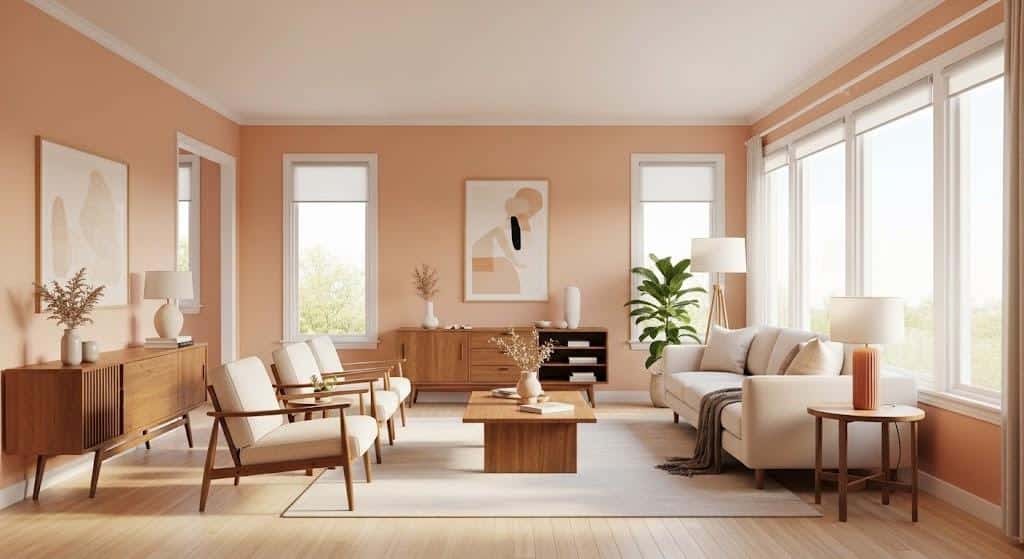
Peach is a soft, light shade of orange that brings warmth and comfort without overpowering a space.
This color is ideal for accenting mid-century modern furniture or textiles, adding a playful yet refined touch to living rooms or bedrooms.
It pairs nicely with neutrals or other warm tones for a balanced look.
4. Sunflower Yellow
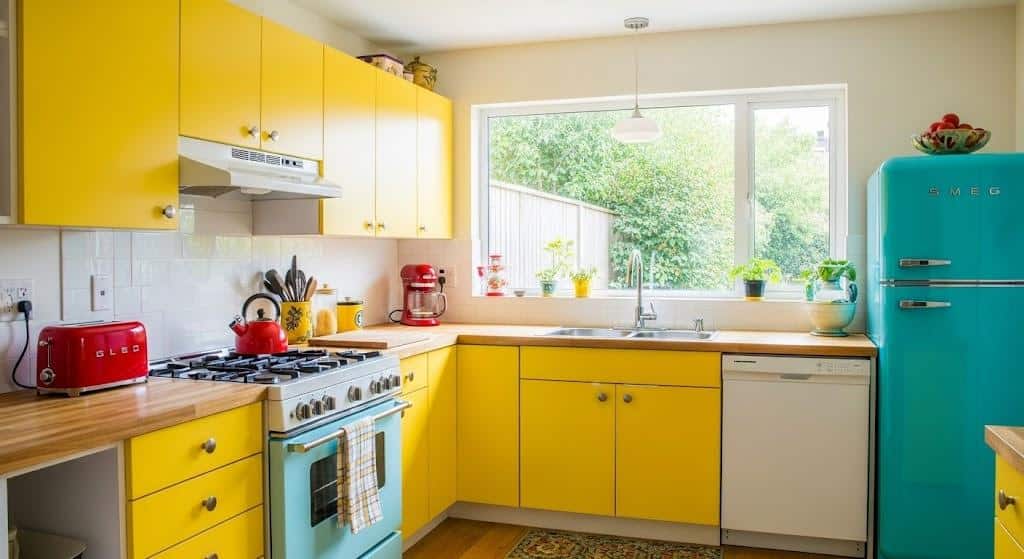
A bright and cheerful hue, sunflower yellow adds an instant burst of energy to mid-century modern design.
Perfect for accent walls, accessories, or textiles, this vibrant color can convert a space into a lively environment.
It pairs well with muted neutrals or deep shades like navy or charcoal for a strong contrast.
5. Goldenrod

Goldenrod is a rich, golden yellow that brings warmth and a vintage feel to a room. It’s perfect for creating a retro-inspired atmosphere while adding depth to the space.
Whether used in furniture, artwork, or as an accent wall, goldenrod complements wood finishes and other earthy tones, making it a staple in mid-century modern interiors.
6. Copper
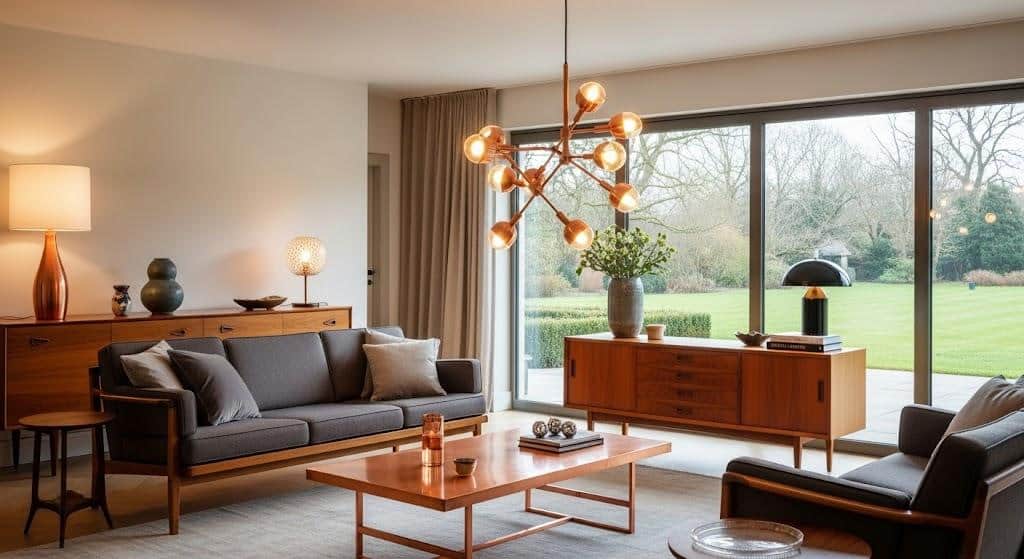
Copper is a metallic warm hue that adds a touch of refinement and retro flair.
It’s often used in mid-century modern furniture hardware, lighting fixtures, and accents.
Copper works well with earthy tones like olive green, burnt orange, and even teal, creating a balanced effect in the space while introducing a modern touch.
7. Brick Red
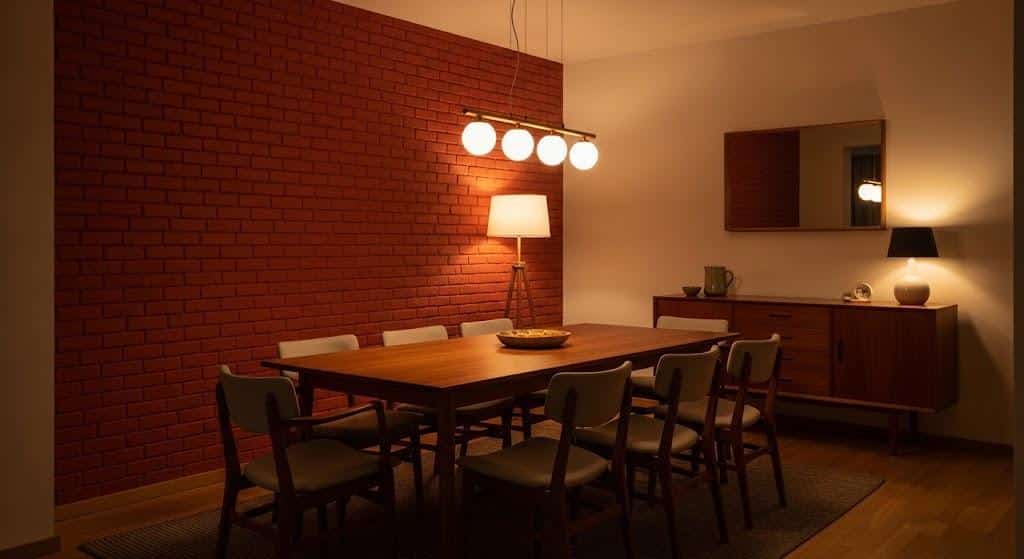
Brick red is a warm, earthy tone that grounds a space, creating a cozy and inviting atmosphere.
Ideal for accent walls, upholstery, or decorative items, brick red adds a sense of depth without overwhelming the room.
It pairs beautifully with neutrals like beige, gray, and natural wood finishes, offering a timeless, retro appeal.
Cool Tones
Cool tones are calming and tranquil, perfect for creating a serene, soothing environment.
These colors work particularly well in bedrooms, bathrooms, or any space where relaxation and tranquility are a priority.
8. Olive Green
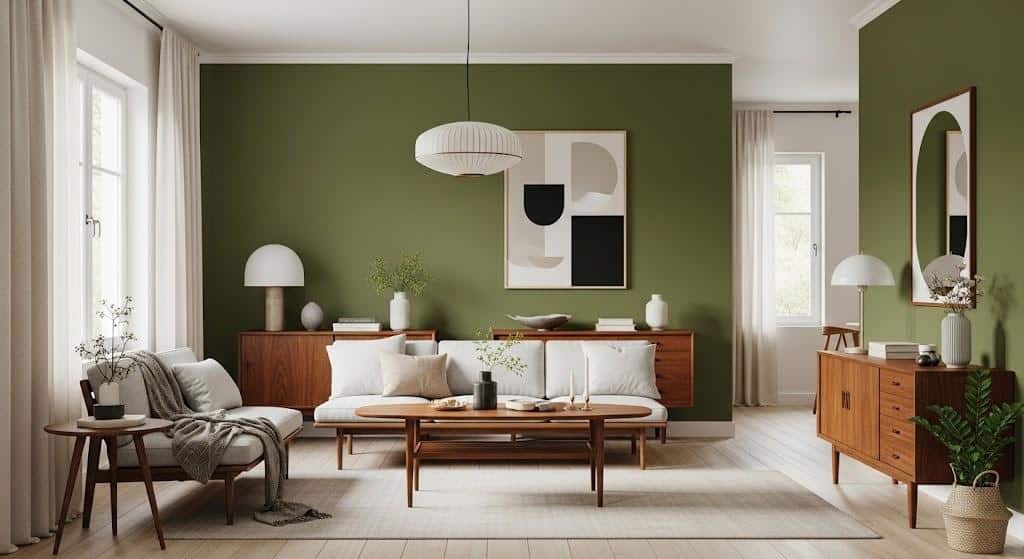
Olive green brings an earthy, subdued vibe to mid-century modern interiors. It brings a sense of calm and nature, ideal for creating a cozy, organic atmosphere.
This color pairs beautifully with other mid-century hues, like mustard yellow or teal, and complements natural wood finishes, enhancing the retro style.
9. Teal
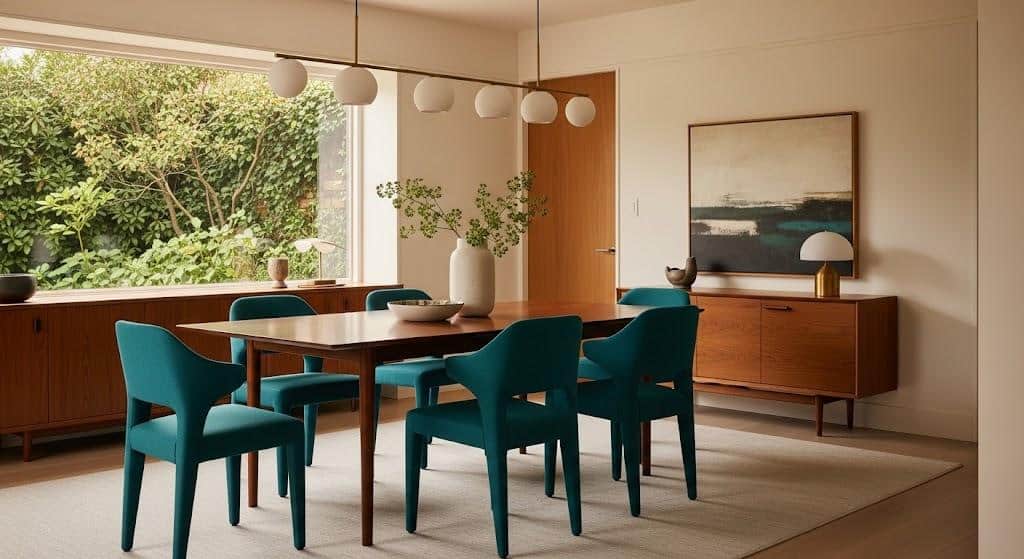
Teal strikes a balance between blue and green, offering both coolness and vibrancy. It’s perfect for creating a calm yet energetic atmosphere in any room.
Teal works well as an accent color for furniture, wall art, or textiles, pairing effortlessly with natural wood, whites, and other mid-century modern tones for a cohesive look.
10. Turquoise
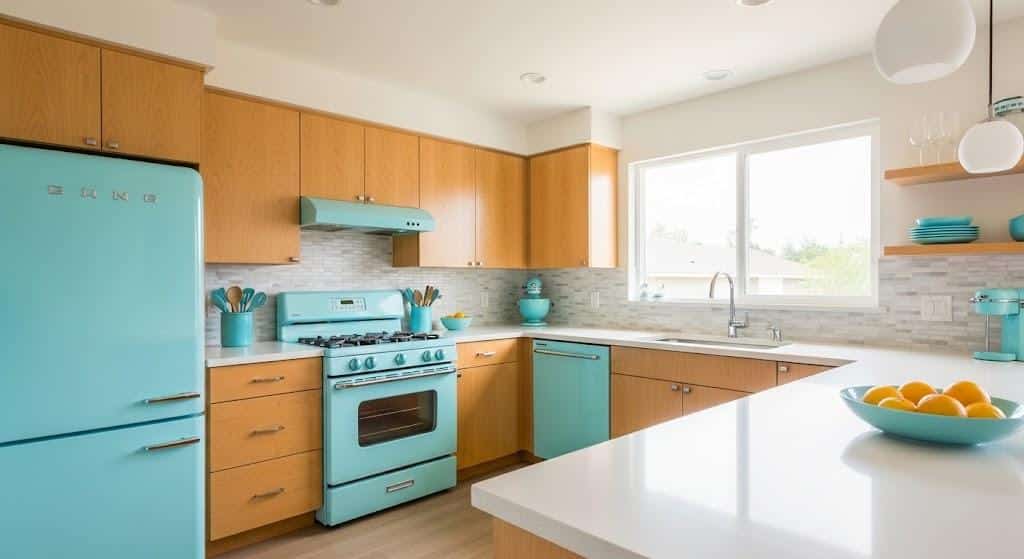
Turquoise is a lively, energetic color that brings a refreshing pop to mid-century modern spaces.
It works well as a statement accent in furniture or décor pieces and pairs beautifully with neutral tones, like whites or grays, as well as with warmer hues like mustard yellow.
It brings a touch of retro glamour without overwhelming the space.
11. Cobalt Blue
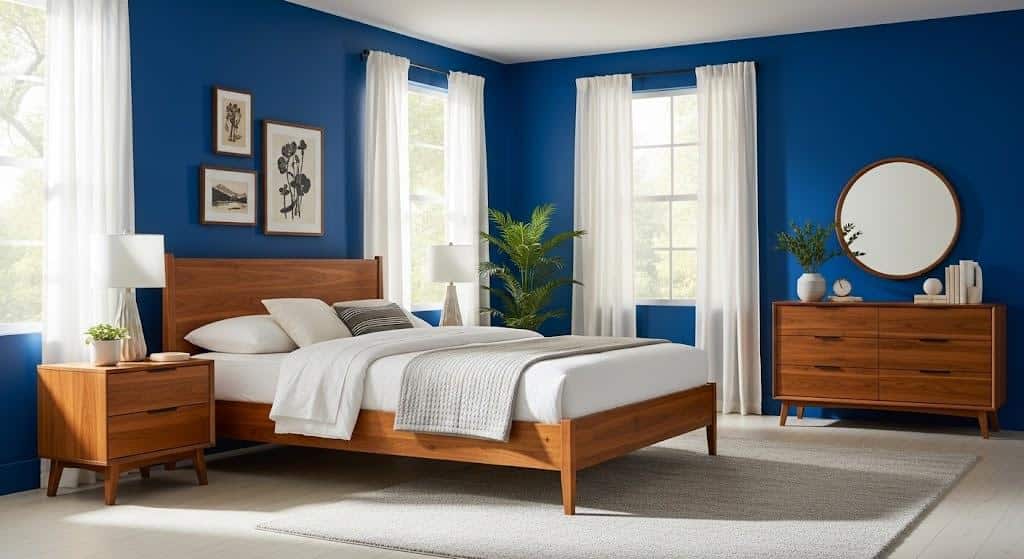
Cobalt blue is bold and vibrant, providing a striking contrast in mid-century modern interiors. It’s ideal for accent walls, furniture, or décor that needs a statement color.
Cobalt blue pairs well with natural wood tones and warm hues like burnt orange or mustard yellow, adding a distinctive touch of retro charm to the room.
12. Emerald Green
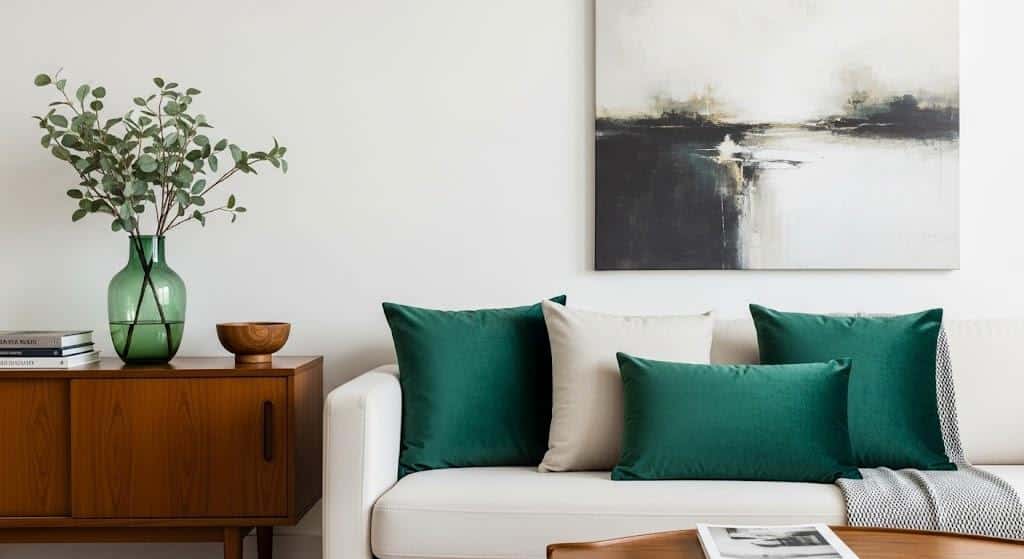
Emerald green is a deep, luxurious shade that gives a sense of richness and style. Often used in furniture, velvet upholstery, or accent walls, this color adds a timeless feel to any room.
It pairs well with gold accents, wood tones, and neutral shades like gray, creating a grounded mid-century modern look.
13. Slate Blue
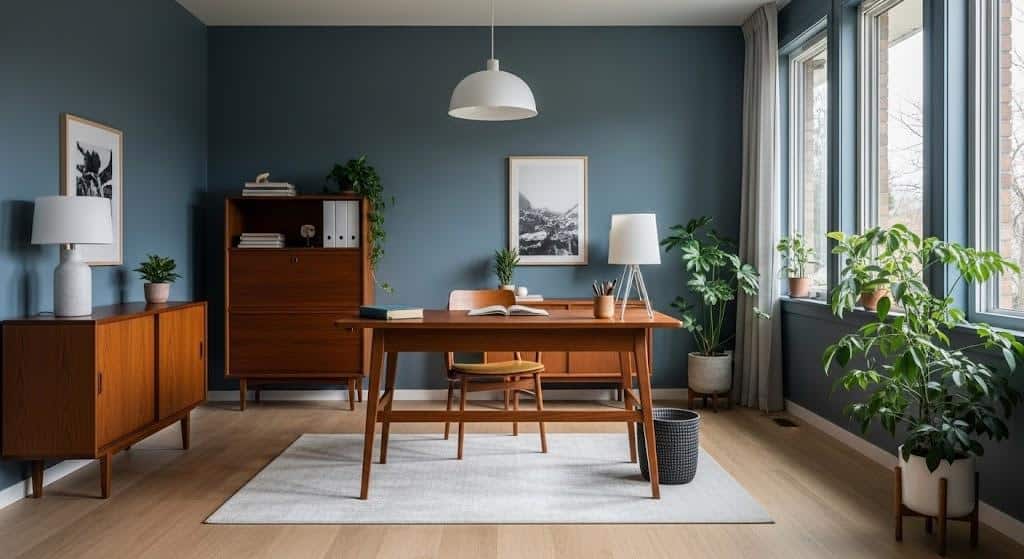
Slate blue is a cool, muted blue that conveys calm and composure. It’s perfect for creating a beautiful atmosphere in bedrooms, living rooms, or even home offices.
Slate blue pairs beautifully with natural wood finishes, white accents, or metallic touches, offering a clean, minimalist vibe that highlights mid-century modern designs.
14. Mint Green
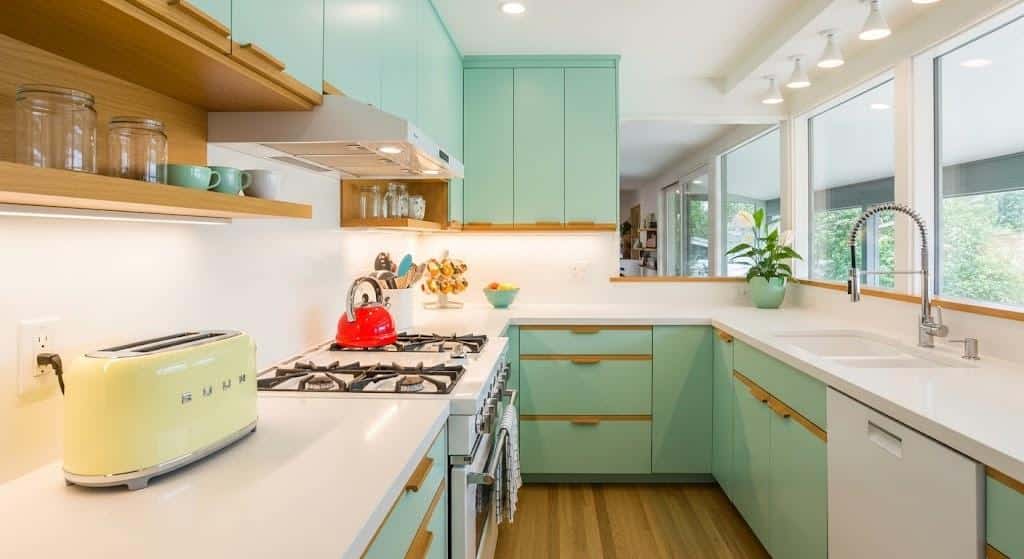
Mint green is a soft, fresh color that adds a cool, airy vibe to spaces. It’s perfect for light, contemporary applications, such as walls, furniture, or textiles.
Mint green pairs beautifully with light woods, whites, and metallic accents, creating a serene and welcoming atmosphere with a touch of retro flair.
15. Powder Blue
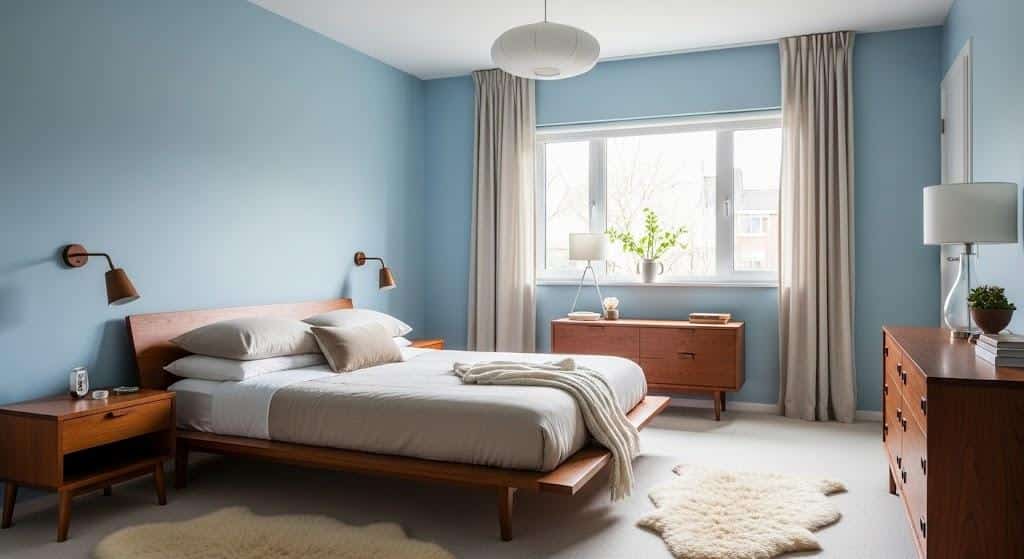
Powder blue is a soft, light blue that creates a peaceful, calming environment. It’s ideal for bedrooms or other relaxation spaces, where tranquility is key.
This gentle hue pairs well with other cool tones, like lavender or mint green, and with neutrals such as gray, creating a refined and peaceful look.
16. Lavender
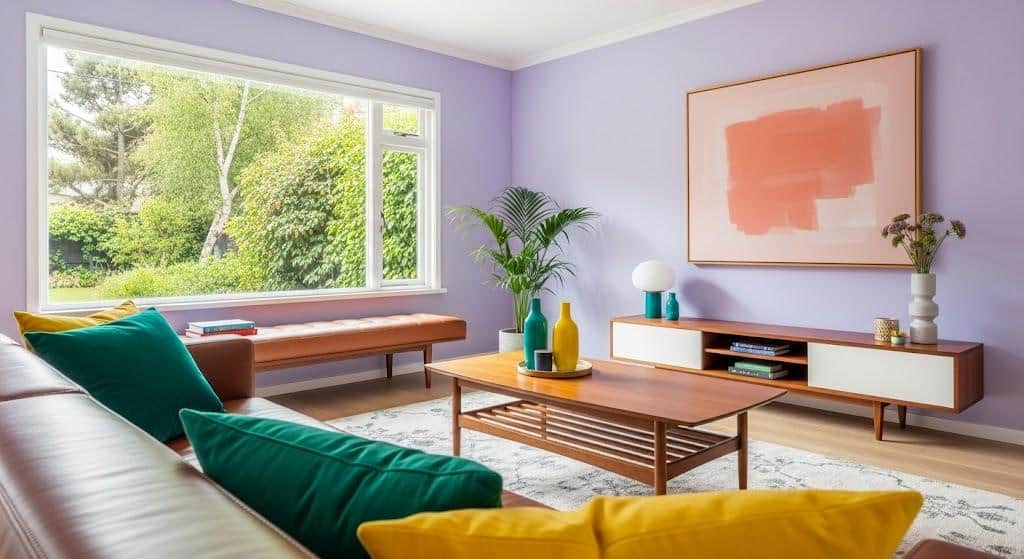
Lavender brings a soft, muted purple hue to mid-century modern interiors. It’s perfect for bedrooms, living rooms, or any space where a calm and serene feeling is desired.
Lavender pairs well with neutrals like white and gray, and works wonderfully with other pastels or even metallic accents, offering a gentle, retro-inspired charm.
17. Pale Pink
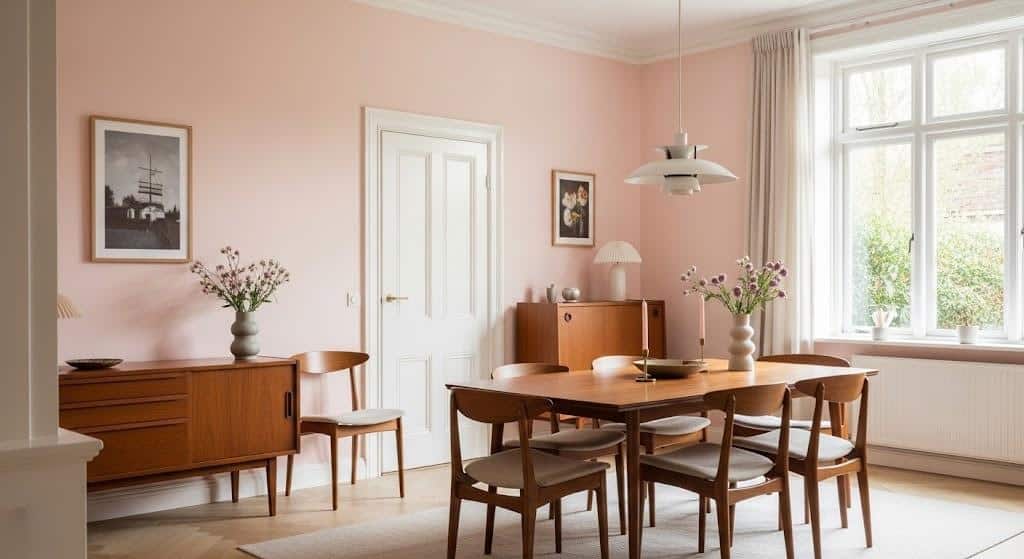
Pale pink adds a gentle, soft touch to mid-century modern spaces, bringing warmth without overwhelming the room.
This color works well for accessories, accent walls, or textiles, providing a calm and inviting atmosphere.
Pair pale pink with neutrals or contrasting bold hues like teal for a balanced, contemporary look.
Neutral Tones
Neutral tones form the backbone of mid-century modern design, providing a timeless, minimalist base for accent colors to shine.
These colors are versatile and work well with almost any palette.
18. Charcoal Gray
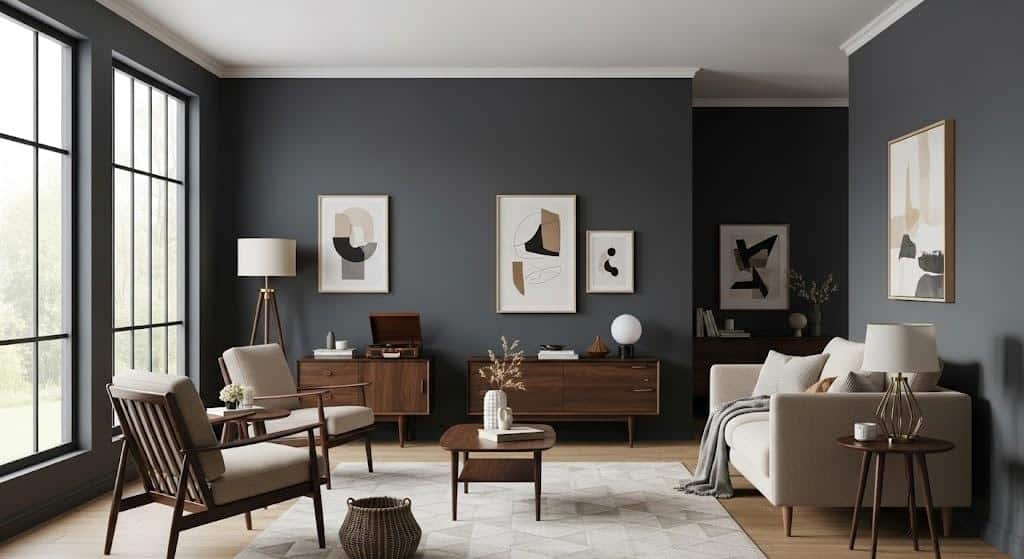
Charcoal gray offers depth and a modern feel to mid-century modern interiors.
It’s perfect for creating a sleek, contemporary backdrop while allowing accent colors like mustard yellow, teal, or gold to stand out.
Charcoal gray is ideal for larger pieces like sofas, feature walls, or flooring, adding a subtle sense of distinction to any space.
19. Almond
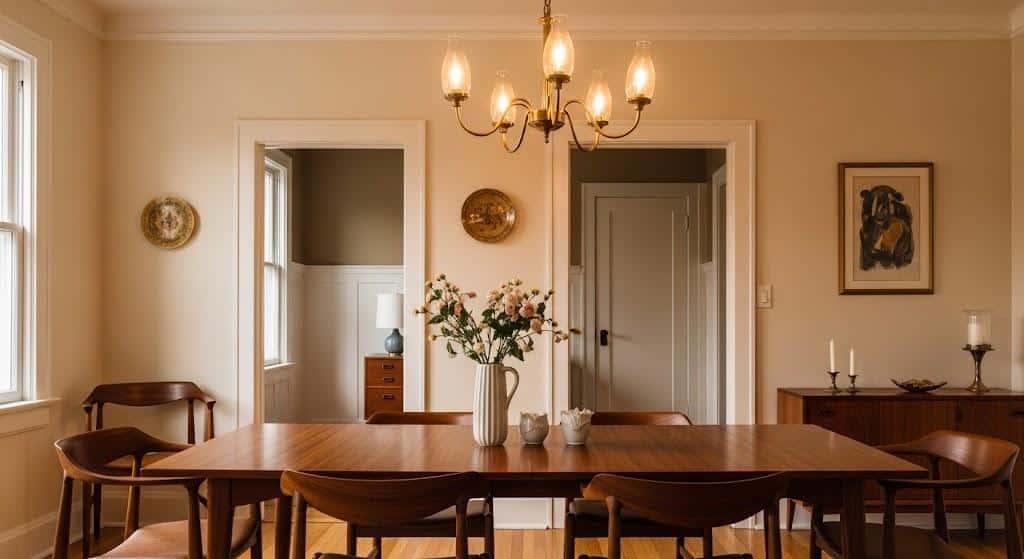
Almond is a warm, soft beige that brings a calming, understated appeal to mid-century modern interiors.
It works beautifully as a base color for larger furniture pieces or walls, complementing bolder accent colors.
Almond pairs effortlessly with natural wood finishes, white tones, and retro hues like burnt orange or olive green for a balanced look.
20. Jet Black
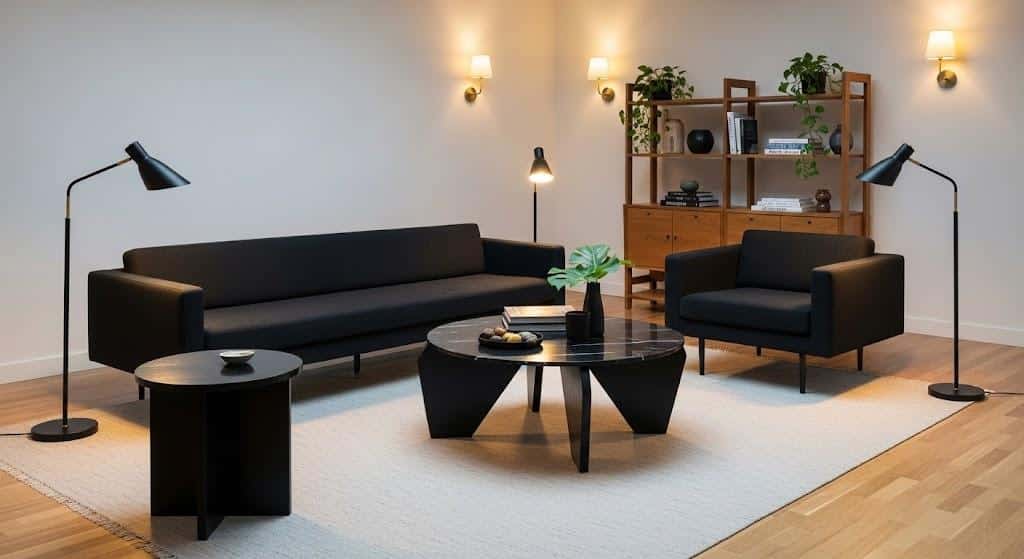
Jet black is bold, dramatic, and timeless. It adds a sense of modernity and refinement to any room, often used for accent walls, furniture, or décor.
Jet black pairs well with almost any color in the mid-century palette, from vibrant hues like turquoise to neutral shades like cream or gray, creating striking contrasts and bold designs.
21. Ivory

Ivory is a soft, off-white color that adds warmth to any room without feeling stark. It works as a base color in furniture, walls, or textiles, creating a calm and cozy atmosphere.
Ivory pairs beautifully with both warm and cool mid-century hues, offering a timeless backdrop that complements vibrant accent colors.
22. Taupe
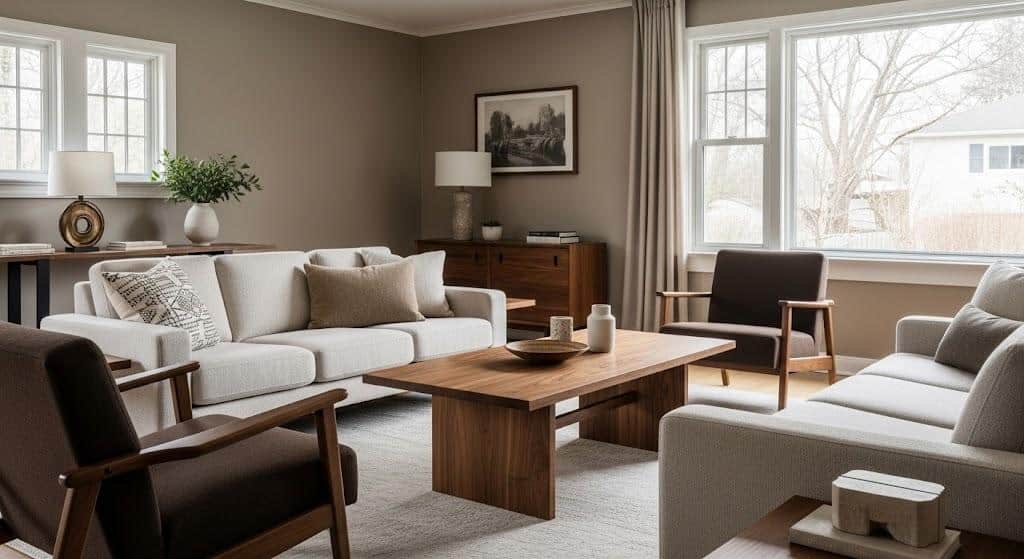
Taupe is a versatile neutral that balances warm and cool undertones, making it an excellent choice for mid-century modern spaces.
Ideal for walls, furniture, or flooring, taupe creates a simple, understated look.
It pairs well with wood finishes, soft pastels, or bold colors like teal or mustard yellow, offering a grounded, classic appeal.
23. Cream
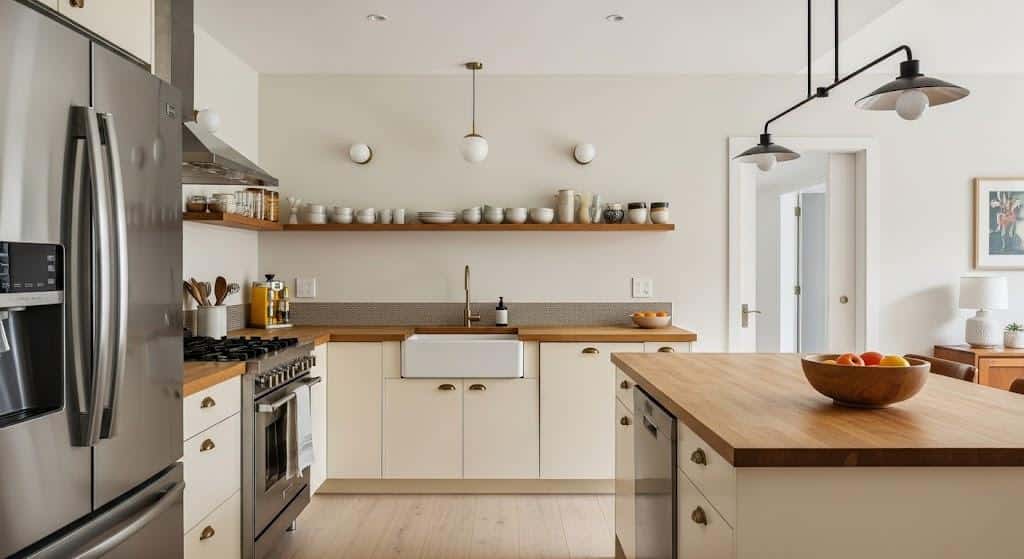
Cream is a warm, soft neutral that brings lightness and airiness to a room. It’s perfect for large furniture pieces like sofas or as a wall color.
Cream pairs well with a wide range of mid-century hues, from the boldness of mustard yellow to the coolness of slate blue, creating a balanced and inviting environment.
Earthy Tones
Earthy tones bring a grounded, organic feel to mid-century modern spaces, evoking nature and a sense of warmth and calm.
24. Lime Green
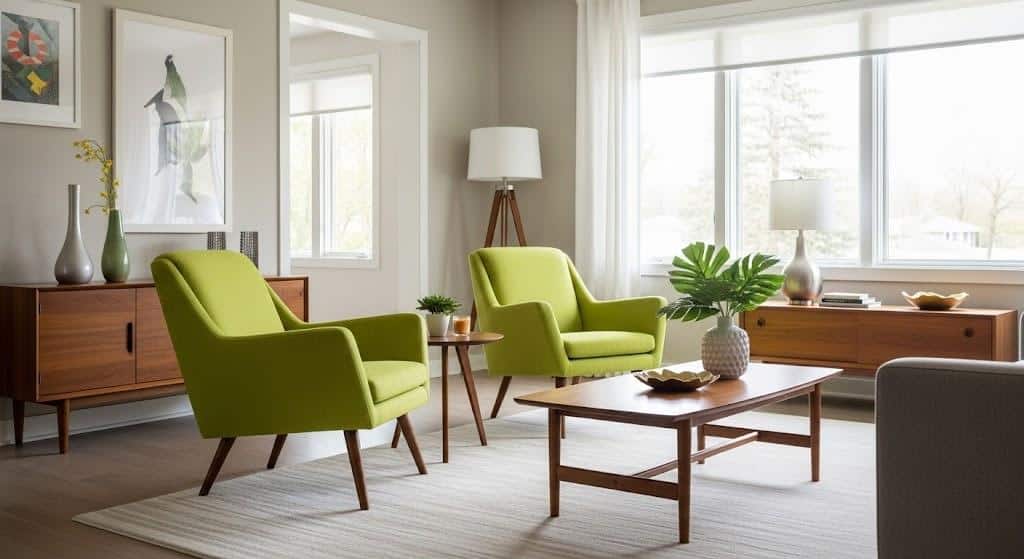
Lime green is a fresh, vibrant color that adds an organic, lively touch to mid-century modern design.
Perfect for accent pieces, textiles, or small décor, lime green brings an unexpected pop of color that energizes a room.
It pairs beautifully with wood tones and neutral hues like white or gray for balance.
25. Soft Coral

Soft coral is a muted, pinkish-orange hue that brings warmth and comfort to any room. It’s perfect for creating a cozy, inviting atmosphere without overwhelming the space.
This earthy, retro-inspired color pairs beautifully with neutral tones like beige and ivory, as well as with rich wood finishes, adding both warmth and vintage charm.
Ways to Apply Mid-Century Modern Colors in Each Room
In mid-century modern rooms, color is used strategically to create both bold statements and serene atmospheres.
The following table highlights how color is applied in key rooms of a mid-century modern home.
| Room | Color Use | Details |
|---|---|---|
| Living Room | Bold Accents with Neutral Bases | Use rich shades in furniture and décor. Balance with neutral walls or floors for a clean look. |
| Kitchen | Retro Appliance Tones | Use soft vintage shades in appliances. Pair with white, black, or wood cabinets for contrast. |
| Bedroom | Calm Shades with Fun Touches | Choose soft, soothing shades for peace. Add a pop of bold color in pillows, rugs, or wall art. |
Using color the right way is key to capturing the mid-century modern vibe.
If you love bold accents or soft, calming shades, each room offers a chance to bring this timeless style to life.
Tips for Choosing Mid-Century Modern Colors
When selecting colors for a mid-century modern space, the goal is to achieve a balance of vibrancy and style.
Here are some key tips to guide your color choices:
- Start with Neutrals: Use calm base tones like white, gray, almond, or ivory to let accents shine.
- Incorporate Retro Accents: Add pops of mustard yellow, teal, burnt orange, or olive green for vintage flair.
- Use Natural Elements: Bring in wood, leather, or stone to add warmth and mid-century texture.
- Focus on Balance: Match bold hues with soft neutrals, think mustard yellow with gray or teal with ivory.
- Consider Light and Space: Use light tones to open small spaces and darker ones for cozy, larger rooms.
- Don’t Be Afraid to Mix: Pair contrasting colors like orange and teal or yellow and gray for bold harmony.
Wrapping It Up
Mid-century modern shades can turn any room into a space that feels stylish, calm, and full of charm.
These colors work well with soft lighting, wood, and clean shapes to keep the look both simple and bold.
You can mix light tones and deep shades to match your taste without feeling too loud or too plain. From walls to small details, every shade has a job to do in your home.
Which mid-century shade do you want to try first? Share with us in the comments below!

